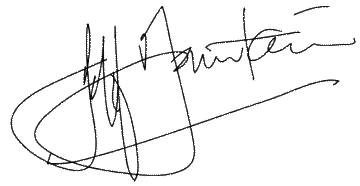‘Now I understand why the French didn’t want to acknowledge God in the EU constitution!’ said Corrie as we emerged from the Reformation Museum in Geneva. ‘All those terrible religious wars!’
Corrie and her fellow travellers had been studying the exhibition in the museum about the eight bloody wars fought between Catholics and Protestants over the religious future of France-wars in which both lost out in the long run!
The infamous St Bartholomew’s Day Massacre of 1572 had resulted in the great Hugenot expulsion, ridding France of thousands of its middle class Protestant entrepreneurs. The victors, the Catholic Church and the Crown, both lost credibility with subsequent generations who overthrew the ancient regime in an equally bloody French Revolution.
Fireworks on the French side of Lake Geneva on Saturday evening marked Bastille Day, the opening event of the revolution, as we ended our two-week Share the Heritage trip.
We had started in Amsterdam looking for answers to the question of the Bible’s role in shaping European society. As we traced the footsteps of past ‘heroes of the faith’ through Holland and Germany, examples of the Bible’s profound influence presented themselves at every stop:
•as the formative influence of monasteries and cathedrals on early European society;
•on Thomas à Kempis’ best-seller, The Imitation of Christ, compiled near Zwolle;
•in education, as the inspiration for Comenius’ pioneering work;
•through the transforming impact of Boniface on the German peoples;
•via the social, political and religious revolution effected by Luther’s insistence on the authority of the Bible;
•the enduring musical inspiration of Bach and Handel (among others) based on Scripture;
•and directly inspiring the myriad hospitals, orphanages and other institutions caring for the poor and sick.
The Bible had been the inspiration for the missionary work of the Moravians and their pioneering anthropology, evident in the Herrnhut Ethnological Museum; and also for the Czech national hero, Jan Hus. A stop in a tavern in Plzen, home of the Pilsner beer, where persecuted Hussites had met in secret in the cellar, provoked reflection of on the role of the monasteries in developing Europe’s wine and beer cultures!
Old monasteries in city centres like Switzerland’s St Gallen reminded us of how many of Europe’s towns and cities began as monastic communities and grew into centres of art, culture, education, agriculture and commerce. Hence Erasmus’ comment: ‘What is a city other than a big monastery?’
St Gallen’s magnificent library, preserving Celtic manuscripts from the first millennium, showed the monks’ contribution to European cartography, and reminded us of the thousands of scriptoria (copying rooms for scribes) across Europe which were the first publishing houses. The Bible was the first book printed in many languages on the first printing presses, of which we saw several replicas, thus shaping language, culture and customs.
Now in Geneva, on our last day, we were to receive further answers concerning the Bible’s role in shaping Europe. Our guide, Dr Tom Bloomer, led us through the narrow streets of the inner city describing the radical change that had come to the city after the arrival of a young Frenchman named John Calvin in 1536.
Ironically it was a war that had occasioned Calvin’s initial acquaintance with the city. He had had to make a long detour via Geneva travelling from Paris to Strasbourg. Reformation had just begun in Geneva and William Farel persuaded the 27-year-old to stay and help reform the church. Despite his sojourns in Basel and Strasbourg, Geneva is the city irrevocably associated with the name of Calvin. Through his preaching, teaching and writings, the Reformer developed his understanding of church, state and society, based solely on the Bible. He wanted Geneva to be a city set on a hill, a model for others to follow.
Tom led us to the Reformation Wall, erected in 1986 on the 450th anniversary of Geneva’s Reformation, depicting the figures of Reformers associated with the city: Farel, Calvin, Theodore Beza and John Knox. Against the background of Geneva’s motto in Latin: Post Tenebras Lux (After the Darkness, Light) stand the figures of others who spread Reformational thinking to France, Hungary, England, Holland, Scotland and the American colonies.
Geneva did become a model for many in these lands – but not all these efforts were successful. In the case of France, as we have noted, it ended in violent warfare, often used to discredit Christianity and as a convenient excuse to reject the Bible’s message.
Yet a mere stone’s throw from Calvin’s house, we came across a plaque on the wall of a small 19th century evangelical chapel. It informed passers-by that on June 29, 1859, the Evangelical Society of Geneva sent two members to a battle-field in Italy to help injured soldiers, the prelude to the formation of the Red Cross. One of these young men had already founded the YMCA in Geneva. His name was Henri Dunant.
Dunant initiated a conference of 16 major nations in 1863 to found the International Red Cross. The next year he persuaded the Swiss government to sponsor the “Geneva Convention for the Amelioration of the Condition of the Wounded in Armies in the Field”. This Geneva Convention was the first treaty of international humanitarian law, a major step towards lessening the atrocities of ‘all those terrible religious wars’.
Oh, and Dunant’s life-inspiration was, of course, the Bible.
Till next week,
Jeff Fountain
Till next week,

